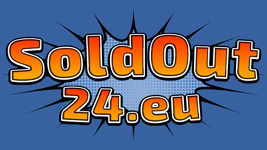Creating product labels compliant with German and EU legislation is essential for successful market entry in these regions. Incorrect labeling or missing consumer information can lead to customer complaints, competitor challenges, and penalties from regulatory authorities. On online marketplaces, non-compliant labels may result in blocked listings until the issues are resolved.
Our service goes beyond basic translation. We provide in-depth consultancy and ensure your product labels meet all necessary regulations. By analyzing your product details, materials, and characteristics, we craft labels tailored to German consumer expectations and EU standards.
Our labeling translations are performed by our specialists with expertise in German consumer goods legislation. This includes food and non-food products, ensuring full compliance with key German laws (ProdSG, LMIV, LFGB, ProdSG, LMIV, LFGB, FPV, Textilkennzeichnungsgesetz, ElektroG, BattG, Verpackungsgesetz etc.) and EU directives (e.g., No. 1169/2011, No. 2001/95/EC (GPSD), No. 178/2002, No. 1935/2004, No. 2001/110/EC, No. 1007/2011, No. 1223/2009, No. 2011/65/EU (RoHS), No. 2012/19/EU (WEEE), and others).
German Label 1
- Translation of one product label
- Consultancy for label compliance
- Verification of marking applications on the product
€140
German Label 5
- Translation of five product labels.
- Consultancy for label compliance
- Verification of marking applications on the products
€600
€120 per label
German Label 15
- Translation of 15 product labels
- Consultancy for label compliance
- Verification of marking applications on the products
€1350
€90 per label
Optional Add-Ons
Printing of Product Labels
Have your translated product labels printed on self-adhesive paper, starting at just €0.02 per item.
All Packages Include
- Translation/preparation of labels for food and non-food products in compliance with German/EU legislation
- Translation of product components (composition) using German-specific terminology
- Compliance with German/EU standards
- Label design developed to meet German regulations
- Verification of product labeling against German and EU legal requirements
- Translation limited to mandatory product information
What We Need from You
- Product label in English or another language (a readable smartphone photo is sufficient)
- Product packaging photos with the label visible
- Additional details about product composition, warranties, usage conditions, manuals, etc., depending on the product
Work Procedure
- Submit product information: label photos, packaging, and other details
- Assessment of information for compliance with German labeling laws
- Identification of missing mandatory product details per German law
- Delivery of translated labels in both graphic and text formats
FAQ DE / EU-compliant product labeling
How long does it take to translate a label into German?
If all necessary product information is provided, the translation typically takes 1–2 business days.
What mandatory product information must be included?
The required information depends on the product type and is determined by specific regulations. Labeling requirements for different products are governed by various legal documents.
To get started, provide us with the existing label and a photo of the product. If additional information is needed, we’ll inform you about the specific requirements for your case.
What laws govern product labeling in Germany, and is the translation compliant?
Our translations fully comply with German and EU standards. During the label preparation process, we ensure that both the packaging and labeling meet all applicable regulations.
For food products, our labels comply with standards such as:
- EU Directive 1169/2011 (FIC)
- EU Regulation 1333/2008 (Food Additives)
- EU Regulation 178/2002 (General Food Law)
- EU Regulation 1935/2004 (Materials in Contact with Food)
- Lebensmittel-Informationsverordnung (LMIV)
- Lebensmittel- und Futtermittelgesetzbuch (LFGB)
For non-food products, compliance includes:
- Directive 2001/95/EC (GPSD)
- CE marking requirements (if applicable)
- ProdSG (German Product Safety Act)
- EU WEEE Directive 2012/19/EU
- Verpackungsgesetz (Product Packaging Act).
We also ensure the correct placement and application of labels according to these regulations.
What does the finished label look like?
We deliver labels fully ready for use. You can print and apply them directly to your products.
Clients receive a PDF file with a graphically designed label and application instructions. Labels can also be provided in JPG or PNG formats for printing. Additionally, we offer printed labels on self-adhesive paper upon request.
How is this translation different from a regular translation?
Our label translations go beyond language. They ensure compliance with German laws, EU directives, and accepted professional terminology.
Unlike standard translations, which focus on style and language variety, our service ensures legal accuracy. Consumer information must be precise to avoid misleading customers and meet regulatory requirements.
Can a Product label be in English for sale in Germany?
No, German law mandates that product names, compositions, and required consumer information must be in German. While certain terms with “international” meanings may remain untranslated, care must be taken. For instance, “cotton” should be replaced with “Baumwolle” in Germany.
Do I need to translate the product label for Amazon Germany?
Yes. Sellers, not platforms like Amazon, are responsible for product information compliance. Selling on marketplaces is equivalent to selling in physical stores in Germany.
Products sold on Amazon Germany must have German labels compliant with German and EU laws. Failure to meet these requirements may result in account suspension or sales prohibition in Germany.
